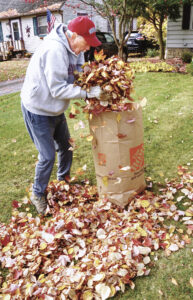Our Heritage: Tragedies befell the Sutliff family in the 1800s
EDITOR’S NOTE: This is part of a weekly series on our region’s history coordinated by the Trumbull County Historical Society.
Mary Ruth Sutliff was the fifth of Levi and Phebe Lord Marvin Sutliff’s eight children, and their first daughter. They had very unfortunate luck while trying to have children, as half of them died very early in life.
She was the fourth child of theirs to die, following Samuel Harvey, who died at 6 months in 1844; Flavel, who died at 5 years old in 1846; and Marvin, who died in childbirth in 1864. A few months after Marvin died, Mary Ruth died of diphtheria in December of 1864 at 11 years and 9 months.
While this string of early deaths is a tragedy in its own right, it is made even more tragic by looking at the things Mary Ruth left behind. In her obituary, it was important to her parents that her “warm and impulsive nature” was noted, along with her “active impressionable mind” and “more than ordinary intellect.” She was an incredibly happy child who had many friends and liked to write poems and collect trinkets. In the Sutliff Museum’s collection, there is a sketch given to Mary Ruth by her friend Augusta Noble, several trinket boxes filled to the brim with Mary’s collectables, and a photograph of the young girl just a month before she died.
Mary Ruth’s obituary, as well as part of Phebe Lord Marvin’s “Reminiscence,” reveals that it only took four days for Mary to die after catching diphtheria.
Her mother wrote that in those four days, Mary seemed at peace, “repeated the 23rd psalm” and said “her father and the angels” were coming to get her.
Phebe makes this more tragic by explaining that after Levi Sutliff’s death, Mary “seemed so anxious to lighten my sorrow” as she lost her husband, mother and two children in just one year. After Mary died, Phebe comments that her son Levi Granger “did all he could to lighten my grief,” and “as far as possible he would fill the place of his father…did all he could to help his little sisters.”
The story of Mary Ruth Sutliff is one of many examples of familial tragedy in the 1800s. The rest of Phebe Lord Marvin’s “Reminiscence” gives many more as she describes the deaths of her sisters, family friends and her own children. Death in early childhood was so common at the time that people might think the grief was minimized, or people were used to it, but that simply wasn’t true.
These were still children who had parents, and their parents grieved for them and everyone else they lost. Despite this grief, sometimes there were hints of relief. Mary Ruth’s obituary ends with the lines “She hath escaped all danger now, Her pain and suffering all are fled.”

